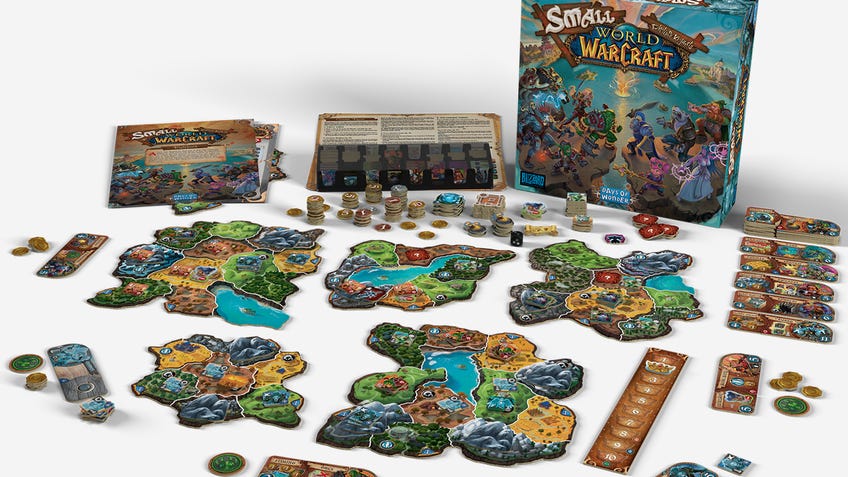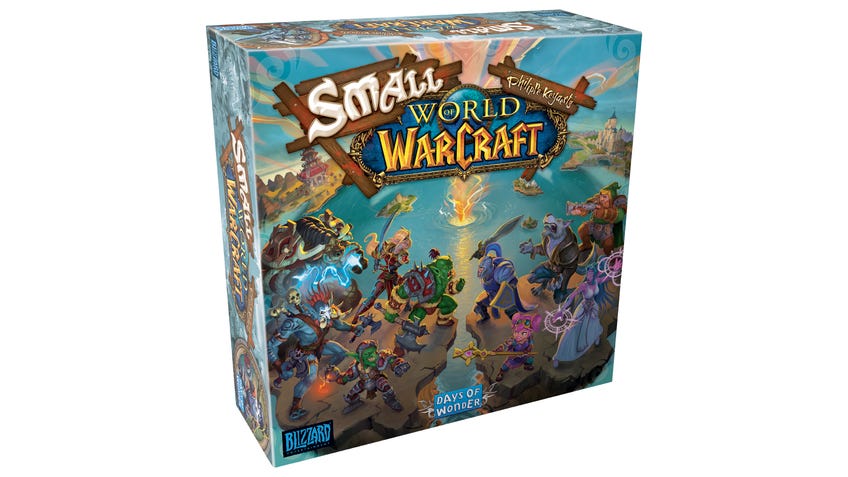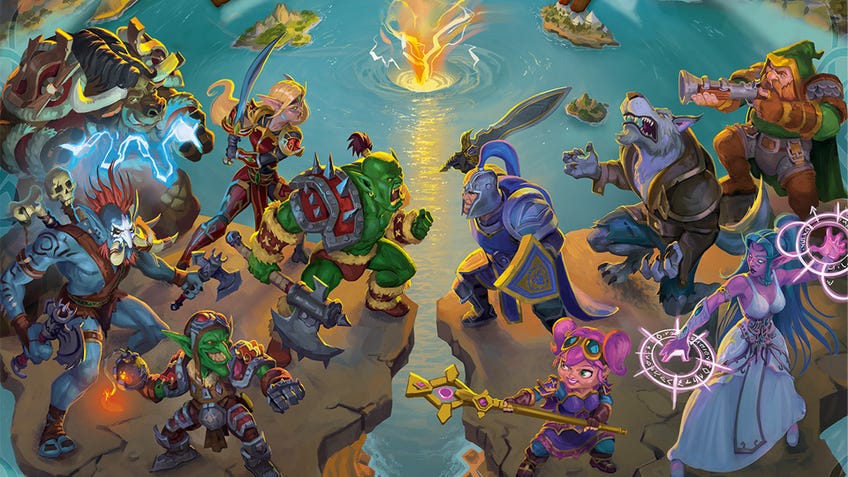Small World of Warcraft board game review - MMO crossover brings flavour and complexity to fantasy conquest classic
Azeroth the wall.
Blizzard recently delayed the release of World of Warcraft: Shadowlands to give the MMORPG’s latest expansion some more polish - but if you’re craving a new way to explore Azeroth, you can pick up Small World of Warcraft.
Released last month, the game is a reskin of 2009 strategy board game Small World. While licensed versions of existing games can feel a cheap way to get a new audience to buy a copy, the similarities between the themes of both games and the new mechanics developed by original designer Philippe Keyaerts make Small World of Warcraft a true sequel to Small World that will entertain diehard WoW without alienating those who’ve never played the MMO.
Small World centres on the conflict between a wide variety of fantasy races trying to find enough room to thrive. That’s pretty much also the plot of World of Warcraft, which has been finding new ways to have elves, dwarves, orcs and trolls fight for resources and land for 15 years. Some of the same races even exist in both games, though their incarnations in Small World of Warcraft have had their abilities changed to be more in sync with the video game’s lore. Small World races that didn’t fit, such as ratmen and halflings, have been swapped out for Warcraft equivalents like kobolds and gnomes.
Sometimes the race and power combos make sense, and sometimes they really don’t - that disconnect is part of the game’s charm.
Just like in the original game, two to five players compete to earn the most victory coins by conquering and holding spaces on the game map. While Small World used one big map, Small World of Warcraft uses several smaller ones to reflect its setting of Azeroth, which is made up of many continents. The result is that players tend to have pretty distinct zones of control or conflict, though Small World of Warcraft also includes plenty of ways to make it easier to deploy forces opportunistically to far-off territory.
Players start the game by picking from a limited number of possible races, each with an inherent power and a randomly-assigned special ability. Sometimes these combos make sense, such as the aquatic naga being harder to root out of swamps, and sometimes they really don’t - like the explosives-loving goblins taking up farming. That disconnect is part of the game’s charm and helps balance the various races, because you’re forced to consider how good both halves of the equation will be.

The races and special powers additionally determine how populous your race is, manifested by tokens that you use to spread across the maps. Spreading into empty land might require just two tokens, but you need to pay extra for pushing into harsher terrain like mountains or forest and commit one token for every enemy in the zone you’re attacking. When a space you hold is conquered, one of your tokens goes back in the box. Since you typically only start with about 10, you can find yourself running out and unable to take back what you’ve lost.
This is where the most complicated strategy in Small World comes in: knowing when to give up on a race and choose a new one. It’s best to quit while you’re ahead and pick up some points for the territory you currently hold, hoping that you’ve placed your original race in undesirable areas so they’ll get to stick around for a few rounds and continue to bring in some points. Then you pick whatever race you think is best for the current board state and start conquering new territory, preying on weakened players until they themselves have to choose to put their race in decline and try a new strategy.

All of these mechanics are true to the original Small World, but Small World of Warcraft adds a key new element that makes choosing what race to control even more strategic. In World of Warcraft, most races belong to either the Horde or the Alliance, factions locked in a perpetual struggle for dominance. Those who remain neutral sometimes play both sides, but more often are just caught in the crossfire.
Likewise, each race in Small World of Warcraft has a faction and you gain one point for each different race belonging to an opposing faction they defeat that turn. Some race powers provide even more incentives for fighting your traditional enemies. The result is that you should look very carefully at the power balance on the board when choosing a race, to determine whether you want to get locked in a struggle that can have big rewards but will perpetually make you a target.
Also new are artefacts and legendary places, tokens placed facedown on various areas of the board. When their spaces are conquered, the token is flipped to reveal iconic parts of World of Warcraft lore, ranging from the original game to 2018 expansion Battle for Azeroth, giving you something to really fight for.
Relics add extra hilarity, as tiny gnomes and kobolds battle for the might given them by Frostmourne.
Relics are artefacts that can be picked up and used in any of your territories, adding some extra hilarity to the game as tiny gnomes and kobolds battle for the might given them by wielding Frostmourne, the legendary sword of the terrible Lich King. If you conquer a spot with the artefact, you get to pick it up and use it yourself - which feels like grabbing some particularly epic loot in the video game. The legendary places become hotbeds of conflict since they often provide bonus victory points, simulating the battlegrounds and warfronts where players most often come into conflict in World of Warcraft.
While World of Warcraft players are most likely to be amused by the lore and flavour at play, Small World of Warcraft’s strong mechanics and excellent balance should make it appealing to any fantasy fan. Considering Small World and World of Warcraft each have an immense number of expansions, the new collaboration also has plenty of room to grow and provide still more challenging battles for conquest.



